The Paris 2024 Olympic Games are upon us and there’s been the usual bikes arms race ahead of the track racing events. With winning times measured down to the thousandth of a second and riders reaching speeds of more than 70km/h, any features that provide a competitive edge are highly sought after.
Despite the scale of the Olympics, there’s surprisingly little publicly available information about many track bike designs, which often come from niche makers and are made in really small volumes. National federations are unlikely to reveal their secrets, either.
That’s changed a little with the UCI’s stipulation that equipment used in competition must be made available for sale, meaning we now at least know how much Olympic track bikes cost.
But if you want a German track bike, for example, there’s little info out there on geometry, sizing or significant features.
Things are a bit different where a commercial partner is involved in development. Hope, Look, Argon18 and Felt, for example, publish a lot more information on their bikes because they also sell them to less well-resourced national teams and to amateurs with deep pockets.
So, who’s riding what on the track at the Paris 2024 Olympic Games? Here, we’ll cover the machines we expect to be at the pointy end of the racing in the Vélodrome National de Saint-Quentin-en-Yvelines, before taking a look at the key features of track bikes generally.
Paris 2024 Olympic track bikes | Who’s riding what?
Let’s take a closer look at the track bikes being used by the leading nations at the Paris 2024 Olympic Games.
Team GB's Hope HB.T Paris

Team GB will be riding an update of their Hope x Lotus track bike, which turned heads at the Tokyo Olympics.
It uses a number of 3D-printed components, including a new Renishaw titanium crankset, handlebar and split-shaft seatpost. It's also reduced the bike's frontal area and swapped to a fork with a sawtooth trailing-edge profile to the fork blades.
At the rear of the bike, there's also a split seatpost, which again comes courtesy of 3D-printing specialist Renishaw.
As well as the pursuit bar shown, the frame is compatible with aero drop bars for sprint and mass-start events. Team GB also looks to be running a narrower tyre at the front than the rear, a trick also seen on some aero road bikes, such as the Canyon Aeroad, to improve aerodynamics.
Australia's Factor Track

Factor specialises in high-end bikes, but Team Australia's track bike takes that to the next level.
The brand's Hanzo time trial bike starts at around $10,000, but the Factor track bike to be used by the Australian team has a starting price of $60,000.
It's designed for the Olympic team pursuit, with Factor claiming it "breaks the mould of stiffness, aero performance and speed".
The frameset is a mix of deep aero sections and the wide fork and seatstay placement now a common feature of track bikes. AusCycling claims it's significantly more aero than its previous bikes, including the Argon 18 Electron Pro, which the team rode at the Tokyo Olympics.
Unlike many track bikes, Factor's commercial offering covers not just the frameset, but almost everything you need to get rolling, including the Black Inc wheels, basebar and seatpost.
Just add a saddle, tyres and a drivetrain and you're in business.
France's Look P24

Look's track bikes have been a popular choice with track teams for years, not only ridden by the French national team, with other teams purchasing their bikes from Look. The Look R96 was the most popular track bike at the 2016 Rio Olympics, with nearly 100 ridden.
The latest Look P24 has adopted the wide-legged stance pioneered by Team GB, and extends this to the double seatpost too, which straddles the seat tube, creating slots to either side.
There's a Look-specific BB 65 bottom bracket shell and the commercial offering comes with Look Zed cranks, which can be adjusted to three different lengths. There are short and a long versions available. Look makes the stem in six lengths and also produces three bar designs for pursuit, speed and Madison use.
Italy's Pinarello Bolide F HR

The Italian team will be riding an update of the 3D-printed bike on which Filippo Ganna broke the world hour record back in 2022. While the men's endurance squad will be on a metal alloy 3D-printed frame, Pinarello has created a carbon version for the Italian women's team.
The Olympic track bike features the same tubercules (which are inspired by humpback whale fins) as on Ganna's bike. They're included in the seat tube and seatpost, and Pinarello says they reduce vortices generated by the rider's legs, lowering drag.
While wide forks and stays may be trendy, Pinarello says its research didn't show a clear benefit, so it has stayed with a narrow design to help lower the frame weight. There are new bars and extensions too.
Team USA’s Canyon Speedmax CFR Track

Claimed to be the German brand’s “fastest ever bike”, the Speedmax CFR Track will be ridden by Team USA and the Danish cycling team at this year’s Olympics.
In contrast to many of the latest track bikes, it features an exceptionally slim profile, with deep aerofoil tubes and a custom 40mm-wide front axle on pursuit builds.
At the rear of the bike, the blade-like seatstays remain narrow, meeting the bike at the tip of the seat tube.
The bike’s custom disc wheels are also designed for clincher tyres, rather than tubular ones, with (relatively) large 25mm tyres being the optimal width, according to Canyon.
Team USA will likely use Zipp Super-9 disc wheels, though.
As with most other bikes, the Speedmax CFR Track can be built up in both pursuit or bunch-racing form, with either aero extensions or a drop bar.
Japan’s V-IZU TCM2

Made in collaboration with Japanese composites specialist Toray, Japan’s V-IZU TCM2 appears to take heavy inspiration from the Hope HB.T.
Like the Hope bike, the V-IZU TCM2 uses a radically wide fork and seatstays, paired with an aero-optmised frame.
Unusually, the TCM2 also features a flipped drivetrain, with the chainring, chain and sprocket placed on the left-hand side of the bike.
In theory, this offers a small aerodynamic gain compared to having the drivetrain on the right-hand side of the bike, because track riders always race anti-clockwise.
At a staggering €126,555, the V-IZU TCM2 is also the most expensive bike at the 2024 Olympics (more on this topic later), beating out heavy competition from other nations.
Germany's FES B16 and B20
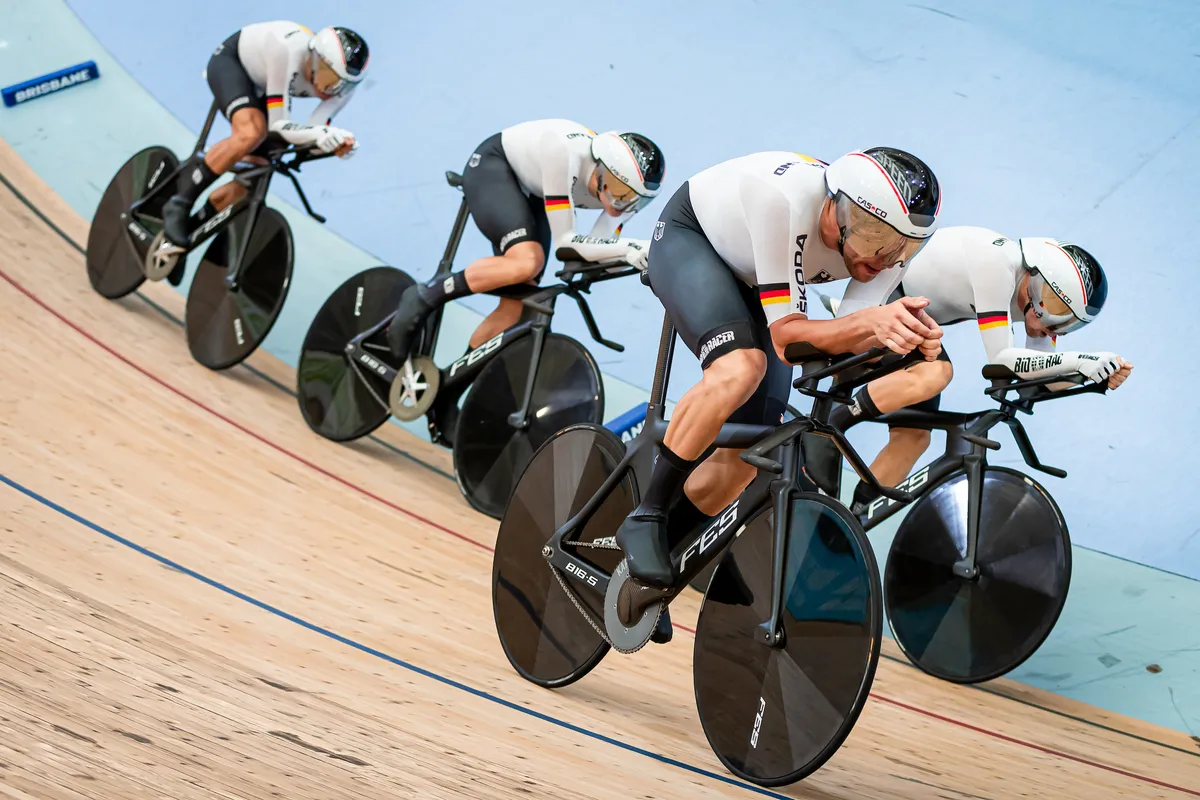
Developed by the Institut für Forschung und Entwicklung von Sportgeräten (FES to its friends), Germany will be using the B16 and B20 track bikes for the Paris Olympics.
The B16 was developed for the 2016 Rio Olympics and comes in specific setups for either bunch racing (BR) or time trial and pursuits (TT).
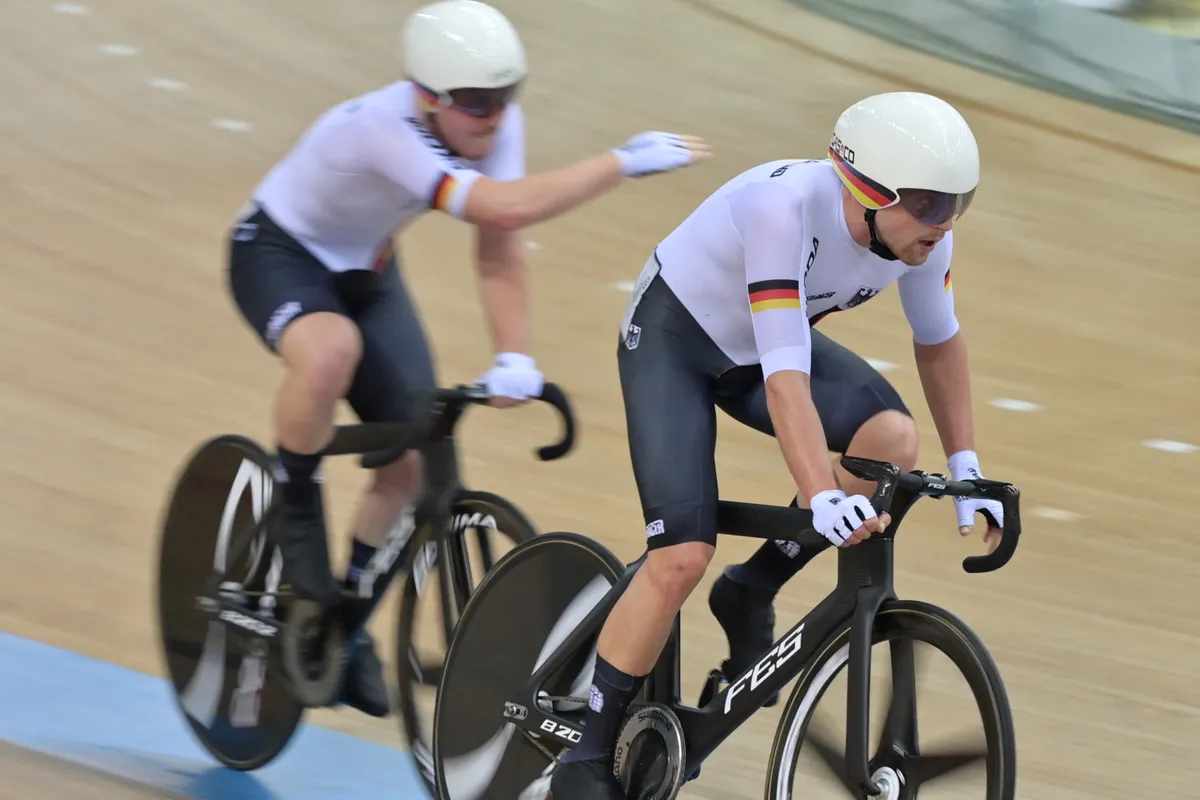
The B20 is an update on the B16. The new bike is engineered to be lighter, stiffer and more aero than its predecessor – notice a theme here? Again, there are BR and TT versions.
The bikes are paired up with eight bar options and three different custom wheelsets, with extra-narrow 70mm front axles and 79mm rear axles on the TT versions, rather than the conventional 120mm rear axles on the bunch-race version.
TT bikes also get a non-standard, narrow 54mm BB30 bottom bracket.
Malaysia's Worx WX-R Vorteq Track
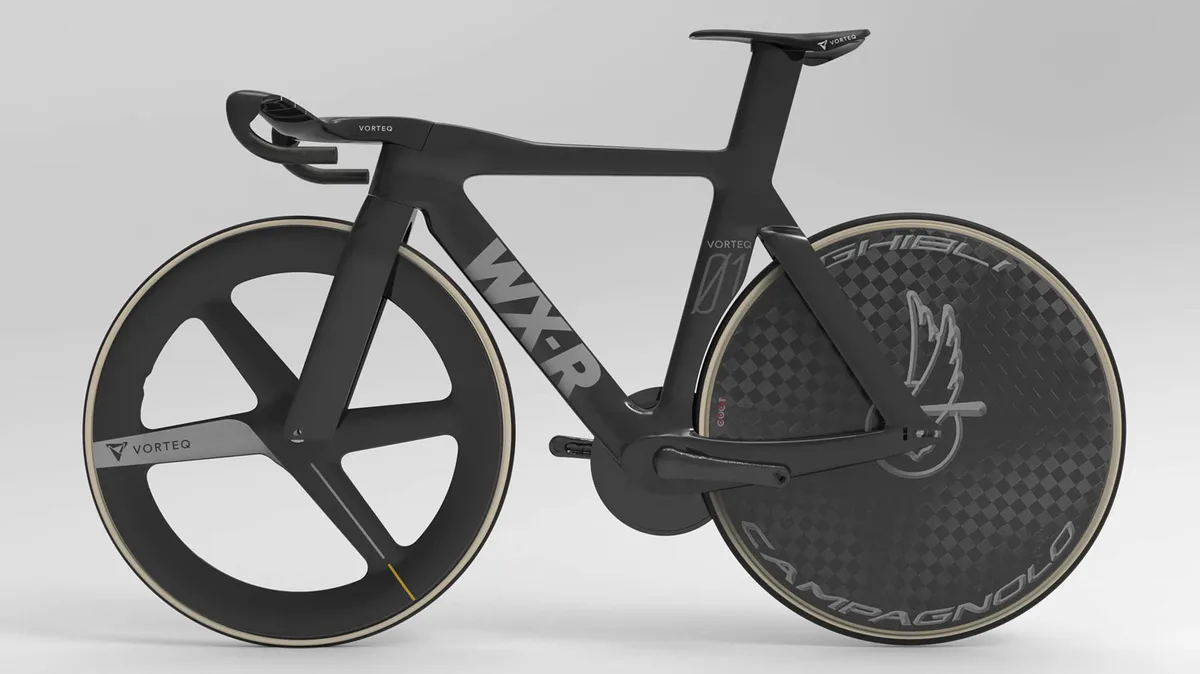
The Worx WX-R Vorteq had the distinction of being the most expensive bike to make a showing at the Tokyo velodrome.
Developed by UK-based Worx and Formula One engineers Vorteq, it’s designed for sprint races and features extra-deep tube profiles with a low frontal area.
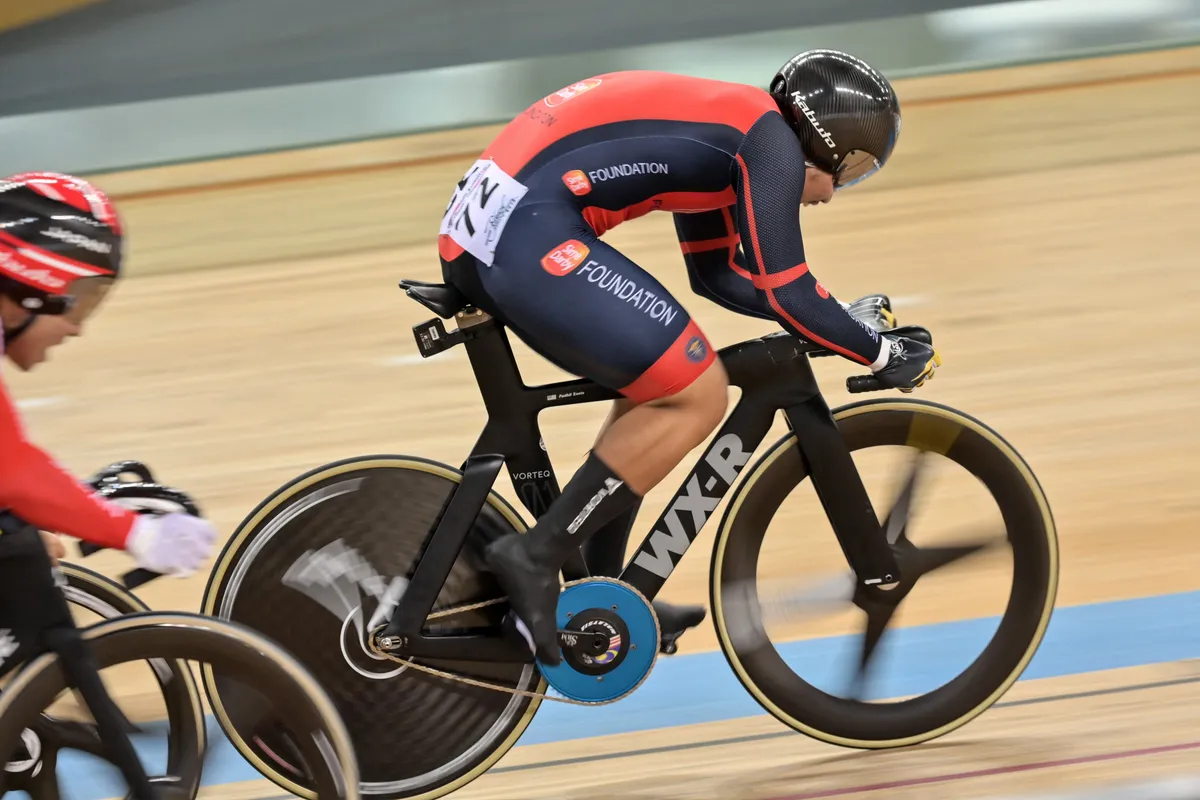
The fork has an unusual profile, which tapers down to a tiny 12×32mm thru-axle that pairs with custom-built four-spoke or disc wheels.
The bikes are also specced with a 30cm-wide aerodynamic short grip bar, which alone retails for a cool £10,000.
Even the rail-less saddle has been custom designed specifically to fix with bolts to the extra-strong fixed-position seat mast. This carries a similarly high £5,000 price tag. The seat mast is another £3,000.
How much does an Olympic track bike cost?
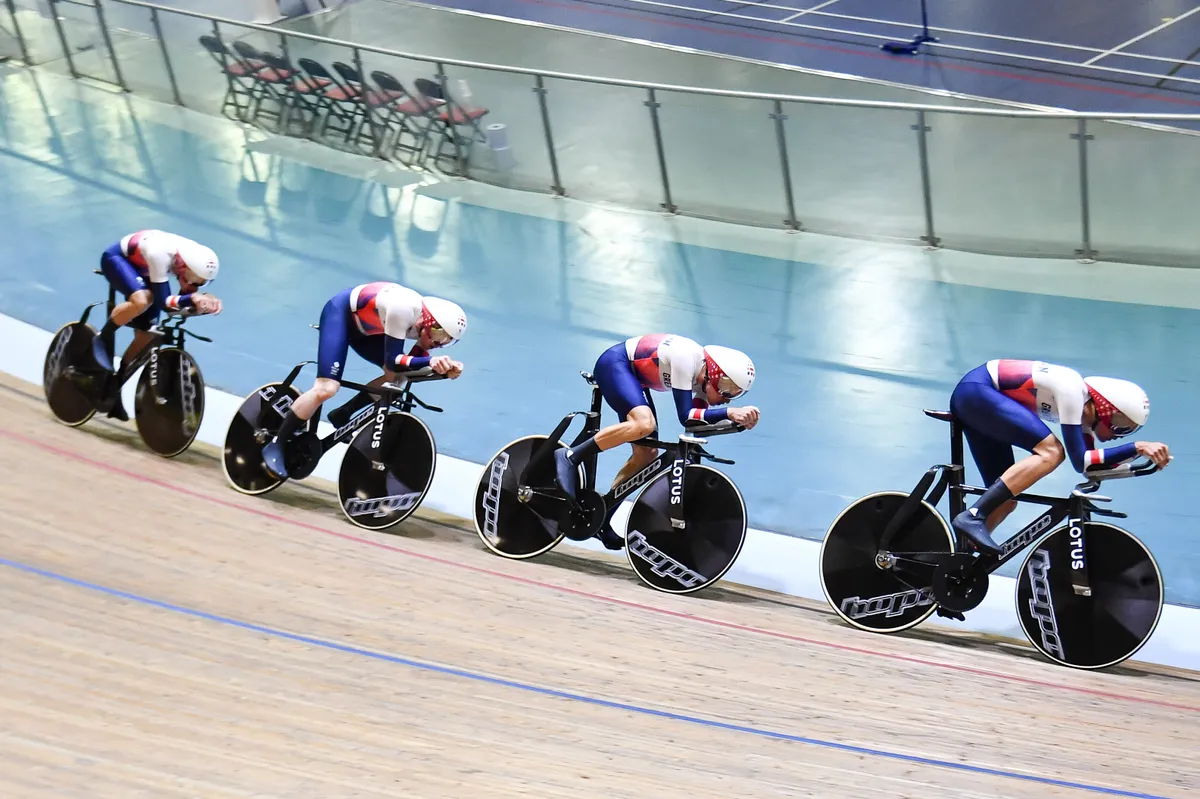
With so much custom development for a limited run of bikes, top-end track bikes can be very expensive.
We've got a separate feature on the price of Olympic track bikes and components. Top prize goes to the Japanese cycling team's V-IZU TCM2 and TC-M1. They're yours for a modest outlay of €126,555 and €112,320 respectively.
As we pointed out, you get a complete bike for that, whereas Team GB's UKSI-BC1 only comes as a frame, seatpost and fork for €64,350. That's quite some inflation from the £17,100 we quoted for the Hope x Lotus HB.T in 2021. At least you're not going to be stuck with stock wheels, tyres, groupset, saddle and bars though.
In contrast, the latest Look P24 frameset starts at only €11,999, while Dolan's venerable DF4 frameset costs a mere €1,683.
The UCI’s rules dictate that bikes used in events must be available for purchase by the general public, so you too can be the owner of an Olympic-standard track bike, if you know where to look (and have deep enough pockets).
What is a track bike?

Designed for riding laps of the velodrome, track bikes are the most pared-down bikes you’ll find anywhere. That means no brakes and a single, fixed gear, so when the bike moves you pedal – there’s no freewheeling.
The wooden track of a velodrome is very smooth, so considerations and concessions made for road bikes or mountain bikes, such as comfort, go out of the window.
Track bikes need to be super-stiff to handle the huge forces put through them by elite track riders – and especially sprinters.
They’ll usually roll on narrow tubular tyres pumped up to a high pressure to minimise rolling resistance (unlike road bike tyre pressure, where riders need to take into account imperfections in the road surface and wider tyres at lower pressures are usually more efficient).
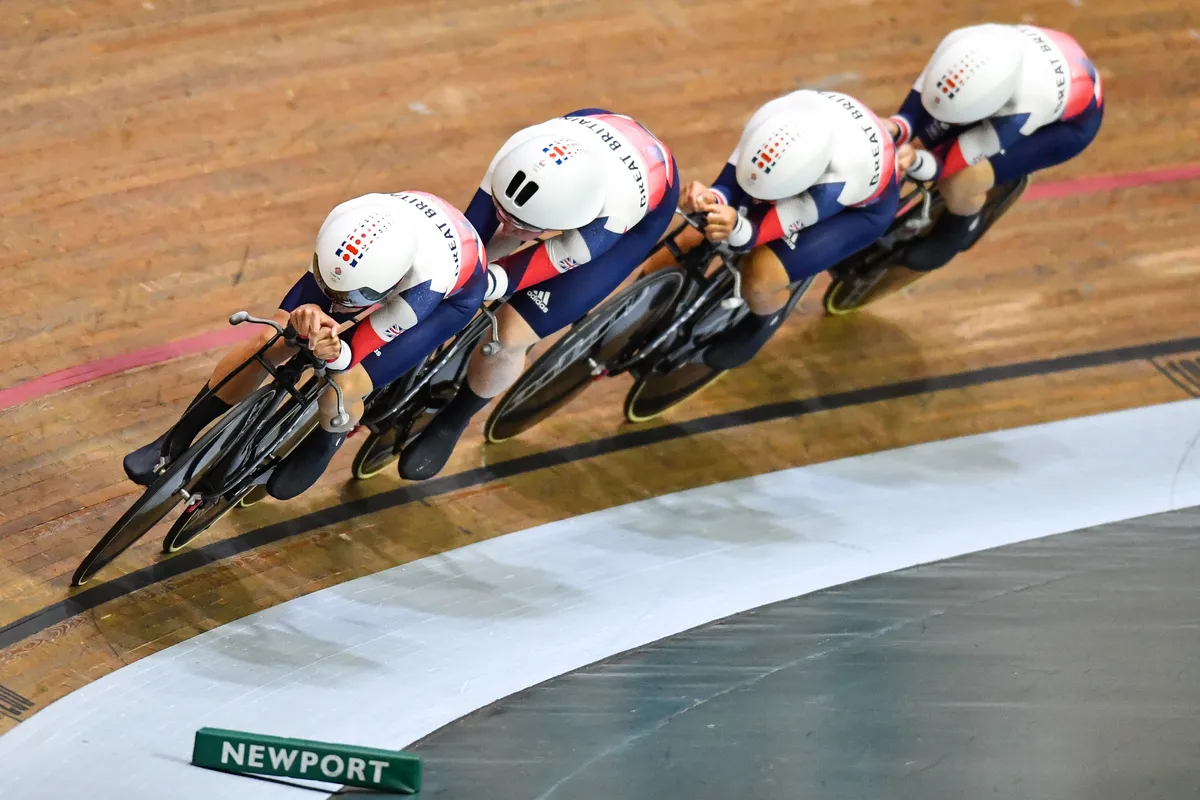
What doesn’t change with riding on the track is the importance of aerodynamics. As we’ve already alluded to, track races are often decided by millimetres and thousandths of a second, so top-level track bike frames are designed to be as slippery as possible.
As a result, while track bikes are mechanically simple, Olympic-level machines are extremely expensive, particularly because many components are custom-built to fit their riders.
What’s more, one bike may not be ideal for all track cycling events either and designs can vary depending on whether a bike is designed for pursuit, sprint or bunch-racing events, with geometry, aerodynamic and stiffness considerations made accordingly.
Track bike frames
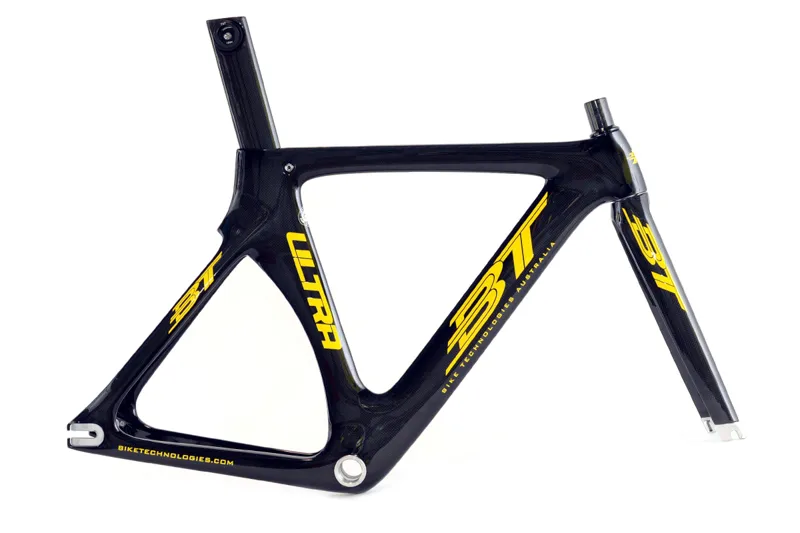
At the Olympic level, track bike frames are usually made of carbon fibre. That's gradually changing, with 3D-printed metal frames appearing.
Track frames are typically designed to be as aerodynamic as possible, while still falling within the UCI’s regulations for frame-tube dimensions. Features often include bayonet-mounted forks, whereby the steerer sits externally as part of the fork, rather than using internal headset bearings, thus elongating the bike’s nose for better aerodynamics.
In simple terms, a narrow frontal profile lowers air resistance, enabling riders to travel faster for less effort, so many track bikes major on this, with really tight fork clearances and narrow axles.
Many bikes, including Team GB's, are now going the other way, though, with a wildly splayed fork and seatstays.
The thinking here is the bike works in tandem with its rider for lower aerodynamic drag overall, even if the bike is less slippery in isolation.
Stiffness is also key, not least for track sprinters hitting in excess of 2,000 watts. Track bikes will be designed to accommodate this force, particularly around the bottom bracket and head tube/handlebar, which is where 3D printing comes into its own.
The UCI’s 6.8kg minimum bike weight limit still applies to track bikes. With far fewer components bolted to track bikes compared to road bikes, and no climbing to speak of, frame weight is a lot less of an issue – aerodynamic performance really is the guiding principle here.
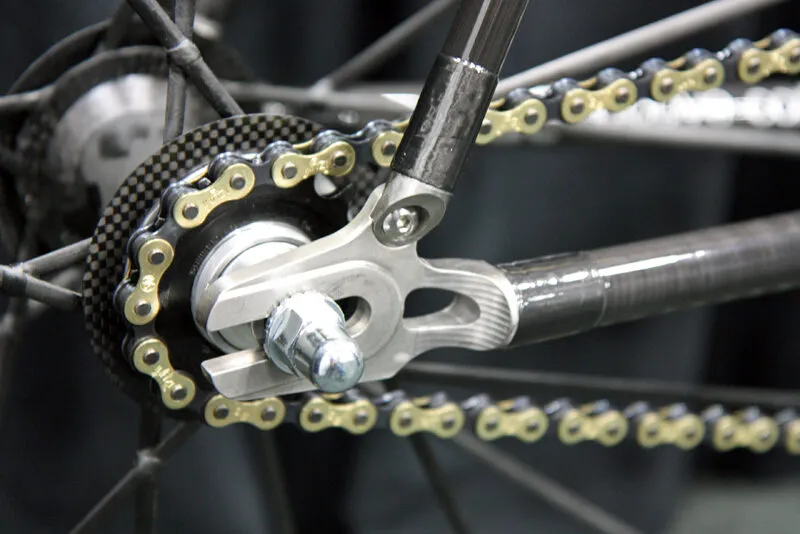
Finally, track bike frames have rearward-facing rear dropouts, enabling the chain to be tensioned by moving the rear wheel backward and forward in the frame.
Some track bikes have replaced the traditional bolted wheel axles with thru-axles. The benefit comes in reducing weight, increasing stiffness and improving aerodynamics.
Track bike gearing
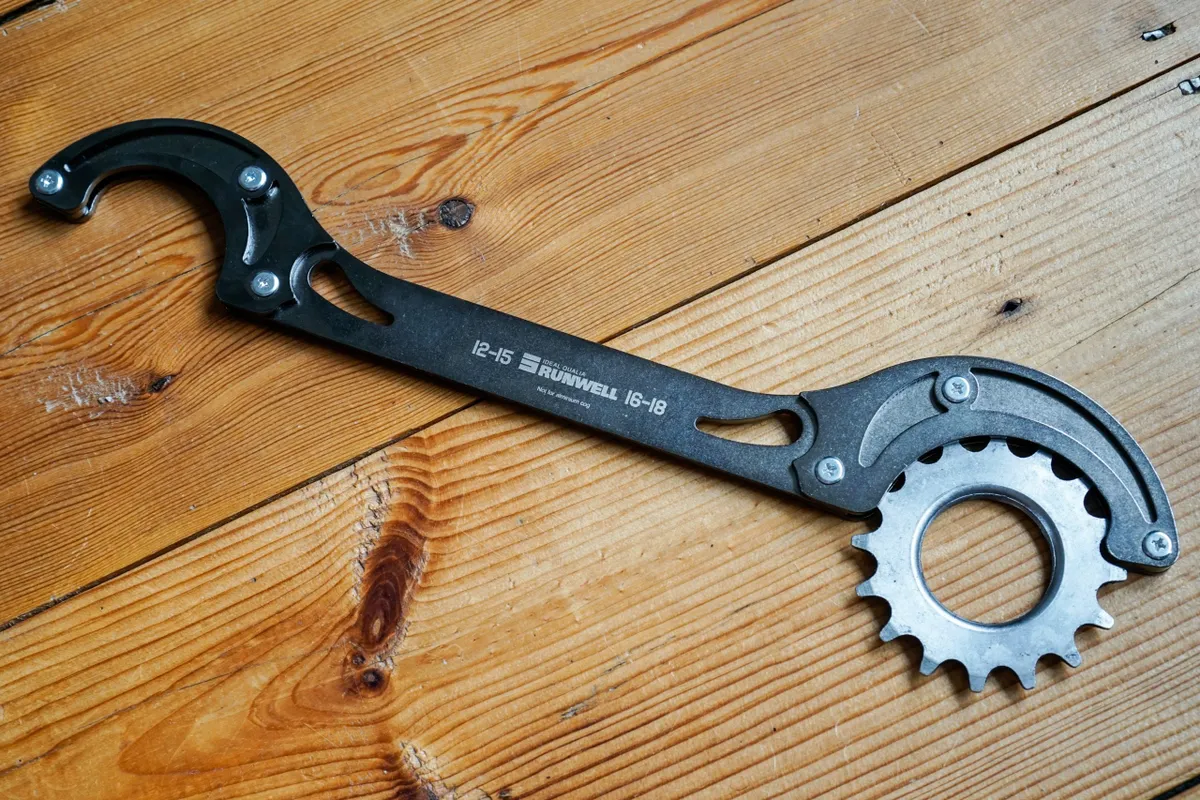
Track cyclists are, in general, powerfully built and push a big gear, so track bikes are designed to accommodate large cranksets and chainrings.
It's worth remembering track bikes use fixed-gear drivetrains, meaning riders have only one gear and can't coast.
Gearing selection, then, means balancing between the top-end speed required for an event and the ability to get away from the line quickly from a standing start. On the other hand, the ability to pedal at a very high cadence once they’re up to speed is also important.
If the gear’s too big, a rider might struggle to get on top of the gear and risks getting left behind on the start line; too small and they’ll spin out or lack the punch required to make a move in the decisive moment of a race.
Typically, track bikes have rear sprockets with between 12 and 16 teeth, paired with a chainring with between 44 and 60 teeth. The ‘perfect’ gearing will depend on the individual rider’s physiology and the demands of their event. All track riders will have a solid understanding of gear ratios to fine-tune their setup. Last-minute switches prior to an event are a common sight.
Increasingly, we're also seeing riders opt for bigger chainrings and sprockets in order to maximise their drivetrain efficiency.
Track bike components
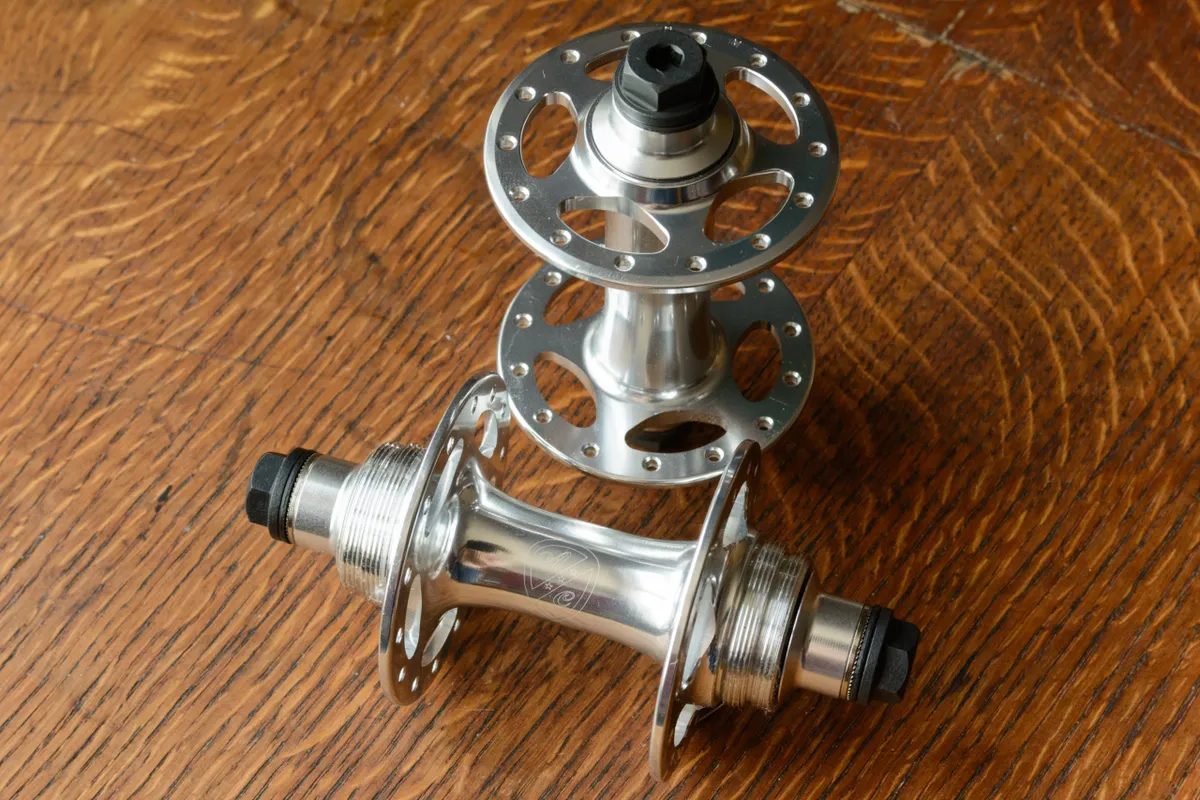
Track bikes use beefed-up components to deal with the stresses of track cycling. The drivetrain typically uses a wider chain, chainring and sprocket than other bikes.
Other components are narrower, though. That includes the bottom bracket and the stance width of the chainset. Rear-wheel axles are narrower than on a road bike too, with standard track bike axle spacing being 120mm, compared to 135mm for the road bike axle standard.
Example front axle widths on Olympic track bikes include 70mm on Germany’s bikes and as little as 32mm on Malaysia’s super-spendy bike, to reduce the bike’s frontal profile.
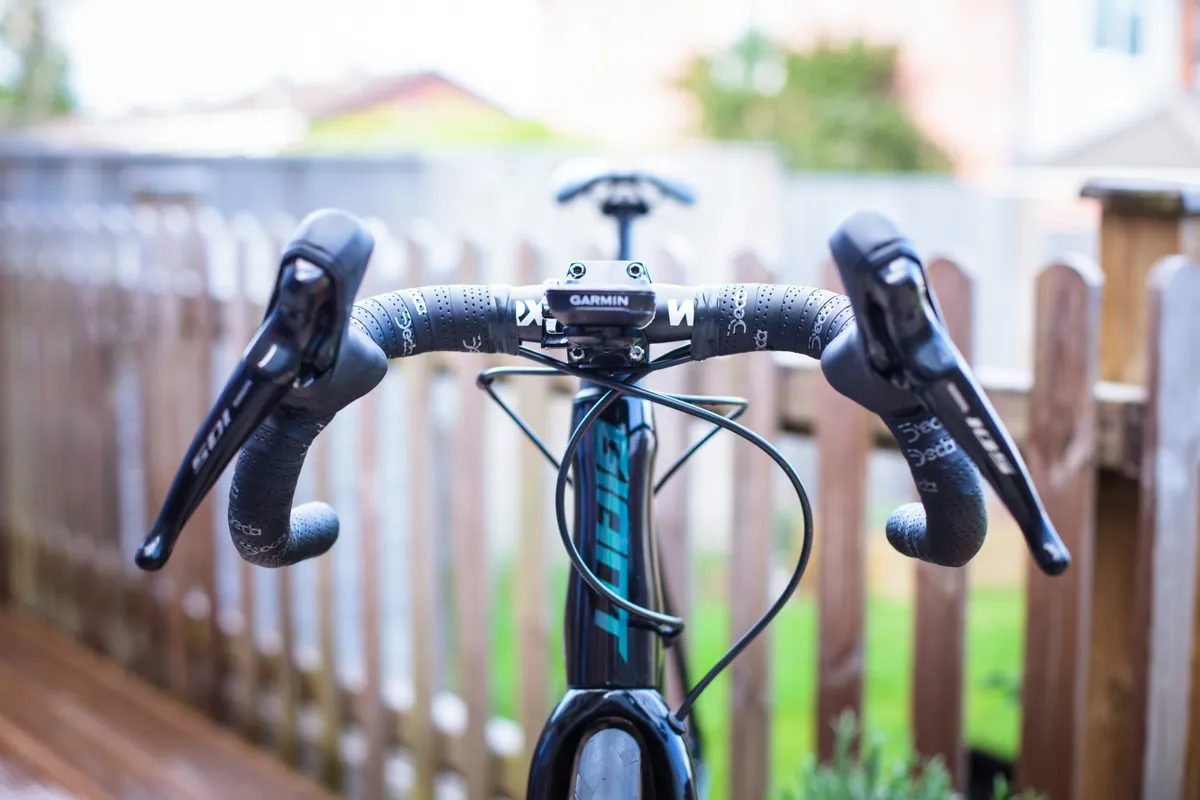
Track cyclists typically use narrow drop handlebars too – down to 30cm for Malaysia’s Worx bike.
Again, this is in the pursuit of improved aerodynamics. For pursuit races, the bike will be kitted out with aero-bar extensions, often 3D-printed or custom-moulded to fit the individual competitor.
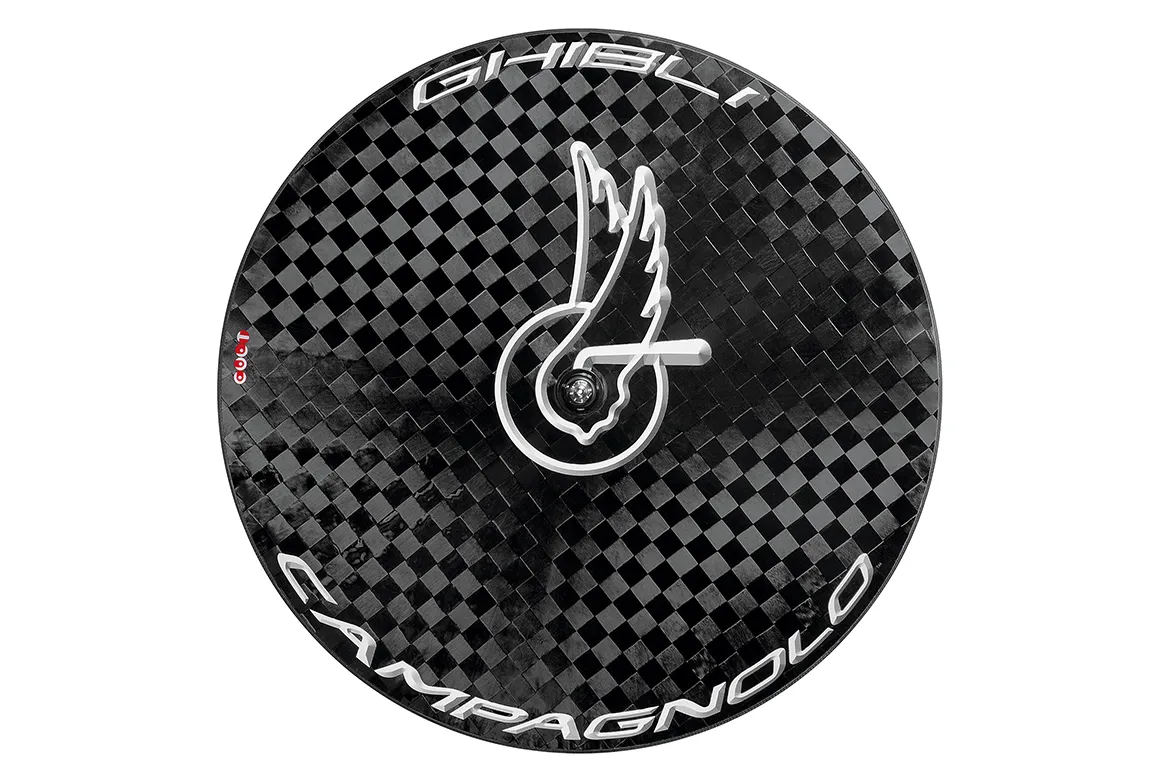
Track bikes are usually equipped with carbon disc wheels with tubular tyres, although wheels with a small number of wide carbon spokes are also a front-wheel option.
Many wheelsets are developed specifically for each team’s bikes, but Campagnolo Ghibli disc wheels are a popular off-the-shelf option.
What about Keirin bikes? What does 'NJS' mean?
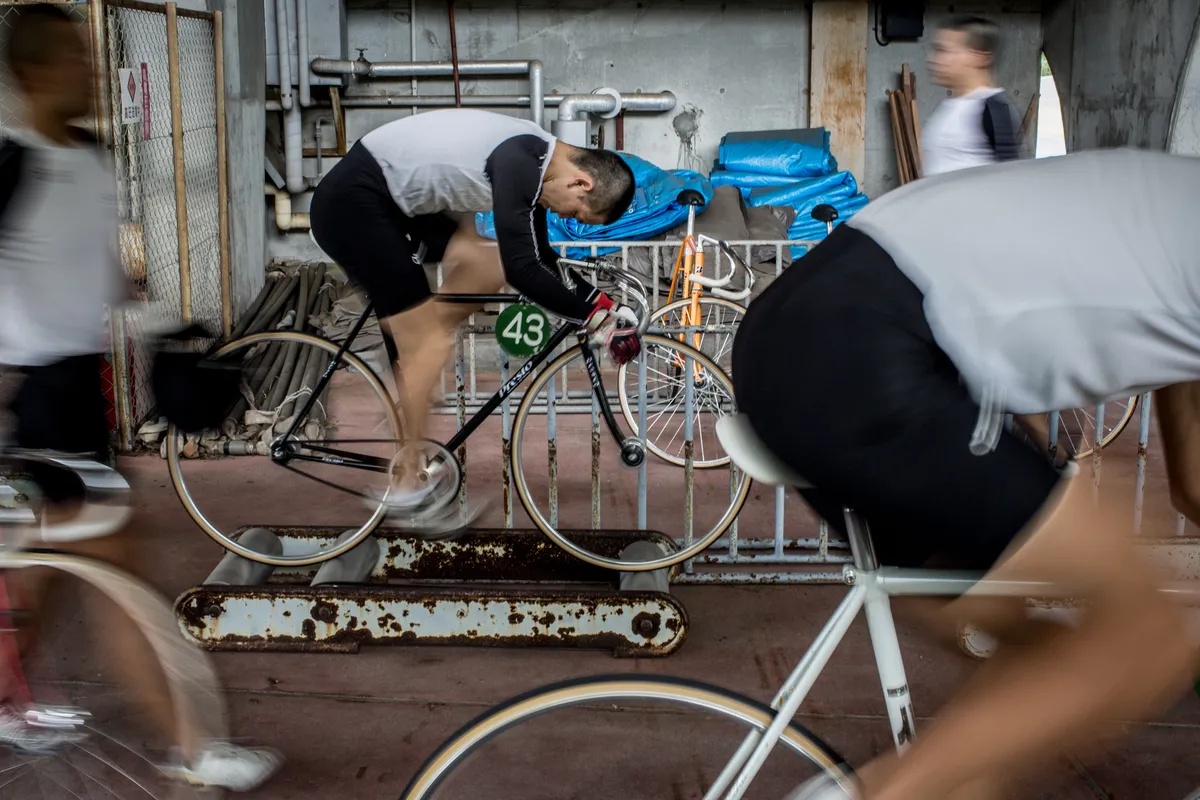
All of the above information relates to UCI-regulated track racing.
Keirin racing in Japan is highly regulated by the Japan Keirin Autorace Foundation (formerly known as the Nihon Jitensha Shinkōkai, or NJS).
As well as licensing riders, the body is responsible for setting specifications and approving all frames and components used in competition. Approved components are stamped with a distinctive ‘NJS’ logo.
These specifications haven’t changed a great deal since the body was founded in 1957, which is why keirin bikes in Japan look so traditional, with skinny steel triple-triangle frames and quill stems.
Keirin racing outside of Japan – including at the Paris 2024 Olympics – is not regulated by the same body, so riders are free to choose whatever bike they please.
